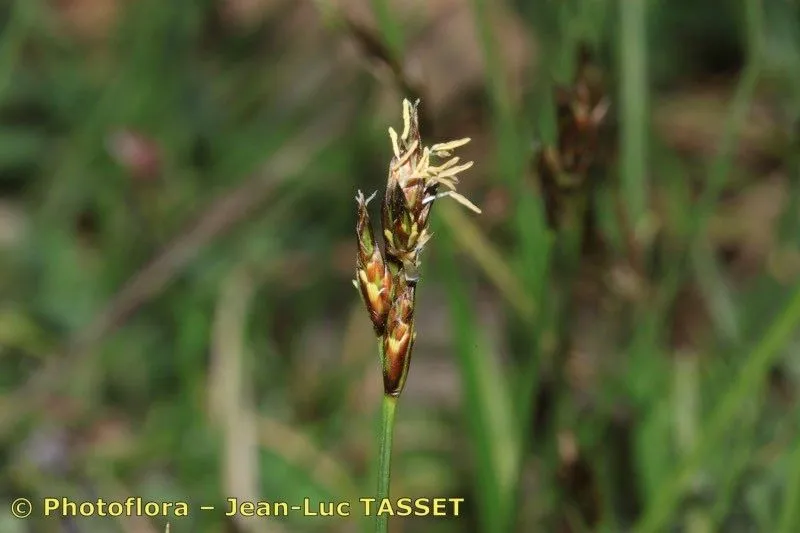
Author: Schreb.
Bibliography: Spic. Fl. Lips.: 63 (1771)
Year: 1771
Status: accepted
Rank: species
Genus: Carex
Vegetable: Unknown
Observations: Europe to SW. Siberia and Mongolia
Early Sedge (Carex praecox)
The Early Sedge, scientifically known as Carex praecox, is a notable species within the Cyperaceae family. First documented in 1771 by Schreb. in “Spic. Fl. Lips.: 63,” this plant has a historical and botanical significance that spans over centuries.
Carex praecox thrives across a broad geographic range, extending from Europe all the way to southwestern Siberia and Mongolia. This adaptability to diverse climates and terrains underscores its resilience and ecological importance. The presence of Early Sedge in these areas often indicates healthy, well-functioning ecosystems, given its preference for certain soil and moisture conditions.
Typically found in grasslands, meadows, and sometimes open woodlands, Early Sedge plays a critical role in these habitats. It helps maintain soil stability and provides habitat and food for various wildlife species. Its fine, grass-like leaves and slender stature also lend a subtle elegance to the landscapes it inhabits, contributing to the biodiversity and aesthetic value of these regions.
Botanically, Carex praecox is characterized by its early flowering period, which sets it apart from many other sedge species. This early blooming can be particularly advantageous in its native regions, allowing it to exploit early-season ecological niches before many other plants have begun their growth cycles.
Understanding and appreciating native plants like Carex praecox is crucial for conservation efforts and environmental management. As land use changes and climate conditions evolve, the adaptive qualities of plants like Early Sedge will be invaluable in sustaining ecological balance and biodiversity.
In summary, Early Sedge (Carex praecox) not only contributes significantly to the ecosystems it inhabits but also serves as an indicator of environmental health. With a documented history dating back to the 18th century and a presence spanning from Europe to Mongolia, this resilient plant continues to be a subject of interest for botanists and ecologists alike.
Deu: frühe segge, frühzeitige segge
Dan: russisk star
Eng: early sedge
Swe: idänsara, rysstarr
Fin: idänsara
Fra: laîche précoce
Nob: russestarr
Nno: russestorr
Nld: vroege zegge
En: Early sedge, Spring-Sedge, Vernal sedge
Be: Асака ранняя
Bg: Ранна острица
Cs: Ostřice časná
Da: Russisk star
Nl: Vroege zegge
Et: Varane tarn
Fi: Idänsara
Fr: Laîche précoce, Laiche de Schreber, Laîche de Schreber, Laiche précoce
De: Früh-Segge, Frühblühende Segge, Frühe Segge, Weg-Segge, Frühzeitige Segge
It: Carice serpeggiante
Lv: Agrais grīslis
Nb: Russestarr
Nn: Russestorr
Pl: Turzyca wczesna
Ru: Осока ранняя
Sv: Rysstarr, Idänsara
Taken Apr 15, 2012 by Photoflora – Jean-Luc TASSET (©)
Taken Apr 15, 2012 by Photoflora – Jean-Luc TASSET (©)
Taken Apr 15, 2012 by Photoflora – Jean-Luc TASSET (©)
Taken May 15, 2016 by Photoflora – Jean-Luc TASSET (©)
Taken Apr 15, 2017 by Photoflora – Jean-Luc TASSET (©)
Taken Apr 15, 2017 by Photoflora – Jean-Luc TASSET (©)
Taken Apr 15, 2012 by Photoflora – Jean-Luc TASSET (©)
Taken Apr 15, 2012 by Photoflora – Jean-Luc TASSET (©)
Taken Apr 15, 2012 by Photoflora – Jean-Luc TASSET (©)
Taken Apr 15, 2012 by Photoflora – Jean-Luc TASSET (©)
Taken Aug 15, 2010 by Photoflora – Benoit BOCK (©)
Taken May 3, 2015 by Tela Botanica − Bruno MACÉ (cc-by-sa)
Taken Aug 15, 2010 by Photoflora – Benoit BOCK (©)
Family: Myrtaceae Author: (F.Muell.) K.D.Hill & L.A.S.Johnson Bibliography: Telopea 6: 402 (1995) Year: 1995 Status:…
Family: Rubiaceae Author: Pierre ex A.Froehner Bibliography: Notizbl. Bot. Gart. Berlin-Dahlem 1: 237 (1897) Year:…
Family: Sapindaceae Author: Koidz. Bibliography: J. Coll. Sci. Imp. Univ. Tokyo 32(1): 38 (1911) Year:…
Family: Asteraceae Author: A.Gray Bibliography: Pacif. Railr. Rep.: 107 (1857) Year: 1857 Status: accepted Rank:…
Family: Fabaceae Author: Medik. Bibliography: Vorles. Churpfälz. Phys.-Ökon. Ges. 2: 398 (1787) Year: 1787 Status:…
Family: Aspleniaceae Author: (Cav.) Alston Bibliography: Bull. Misc. Inform. Kew 1932: 309 (1932) Year: 1932…